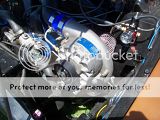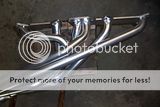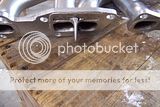Mostly stock 250 with Vortech centrifugal supercharger, 2Bbl Holley , boost referenced FI type 'return' fuel system :

Road tuning of stock trim- supercharged 250 is getting more stable, the next upgrade should be a more boost-able camshaft. Centrifugal Vortech SC builds boost with RPM more like a turbo than Roots type Eaton SC's etc. / Maverick 3Spd Toploader , 2.79 rear gears will get a T5 and 3.80 posi .
Any favorite working forced induction cam grinds with limits of iron log 2bbl mod' head and 250 rpm limits ? .
I don't find any Hydraulic grinds labelled as 'turbo' . Solid lifter 'turbo' 200 cams emphasize higher RPMs, maybe not best range cam grind for the 200 stroker version - 250 RPM's-? .
have fun

Road tuning of stock trim- supercharged 250 is getting more stable, the next upgrade should be a more boost-able camshaft. Centrifugal Vortech SC builds boost with RPM more like a turbo than Roots type Eaton SC's etc. / Maverick 3Spd Toploader , 2.79 rear gears will get a T5 and 3.80 posi .
Any favorite working forced induction cam grinds with limits of iron log 2bbl mod' head and 250 rpm limits ? .
I don't find any Hydraulic grinds labelled as 'turbo' . Solid lifter 'turbo' 200 cams emphasize higher RPMs, maybe not best range cam grind for the 200 stroker version - 250 RPM's-? .
have fun











